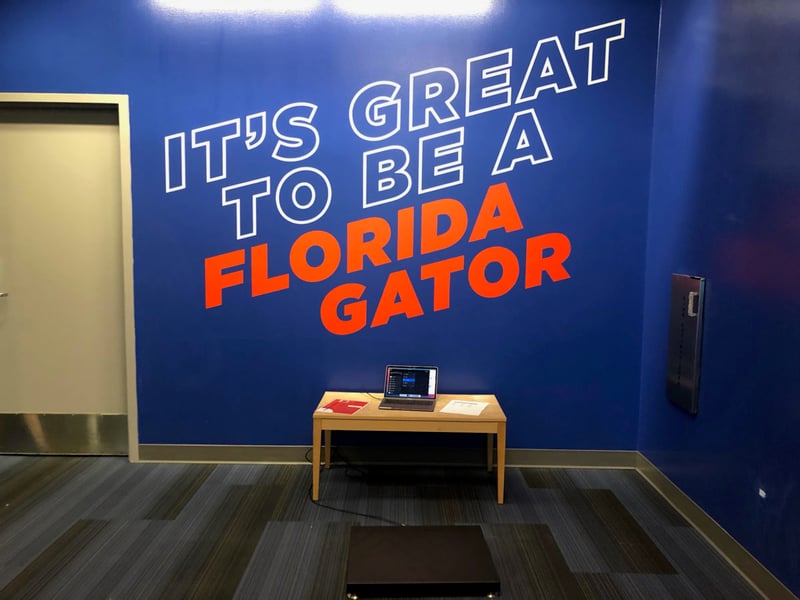
We (Sport Coaches, Strength Coaches, Athletic Trainers, and Dietitians) ask a lot of our Student-Athletes with a limited amount of time. As a Strength and Conditioning Coach, I’m lucky to get three hours with my team in a 20-hour week – only 15% of the total time an athlete has to practice and prepare for competition.
I am of the mindset that less is more to make sure we are as efficient as possible during our limited time together: Short and intense conditioning sessions, fewer movements in the weight room done with great execution, and track/measure what you can change or influence. When it comes to assessments, Sparta Science has been a relatively simple addition to our pre-practice routine. Creating a culture of athlete buy-in, as it relates to non-sport-specific preparation starts with support from the Head Coach.
Since January 2021, Florida Lacrosse has consistently used the Jump Scan or Jump & Balance Scan to educate, inform, and track progress. When we first partnered with Sparta Science, I made it a point to spend time with our Coaches and Athletic Trainer to share what information we could learn, suggest how I would like to incorporate assessments, and gained their support for how it would impact training.
I initially created a schedule for players to complete all assessments (Jump, Balance, Plank) in the weight room, then put together a weekly schedule for athletes to test prior to practice in the lacrosse facility, which is separate from the weight room. With the new force plate location, I have given the players the autonomy to self-scan. Discipline is one of our core values. With over 40 lacrosse players, I can’t guard the force plate or be a cheerleader for every jump they complete. They warm-up and complete the assessments, all on their own.
During the initial assessments, I spent time with each player to explain their results. I also gave a brief talk to the team to explain why we’re testing, how we’ll use the results, and the expectations of use going forward. Once the athletes understood the plan and started using the technology, I began recognizing players with the highest vertical jumps and Sparta Scores, and naturally, someone asked, “Who had the lowest vert/worst Sparta Score?” The competitive nature of watching teammates jump and potentially being exposed for having a lower score has been motivating for players to give their best effort.
Now that the athletes are motivated to actually participate in the assessment, it is crucial to use the data to take action. Prior to training sessions, I write on each player’s lift sheet what their lowest Jump Scan variable is, with the assigned T-score. It helps make them aware of why they are prescribed certain exercises and be more intentional about how they approach the movement. For example, if Explode is lowest, I will write E45 next to their prescribed Deadlift weights as a reminder that they’re trying to improve trunk stability (among other qualities). This benefits players because it serves as a constant reminder of their individual needs, teammates question why players have different movements, and it creates a training discussion. It is an ongoing process to educate, and re-educate players as to why it’s important, what we learn from their results, and how we can improve.
I have weekly meetings with the lacrosse coaches and Sports Performance Staff, and in-season I share updated Sparta Scan results for key players. It’s one central piece of information that can give us greater insight into player health and performance. The goal to create individual accountability for testing helps when the entire staff, not just the performance staff, understands its value.
Sparta Science has been a great tool for our athletes to take ownership of their training. Implementing anything new can be a challenge. Here are three things to keep in mind when creating athlete buy-in: